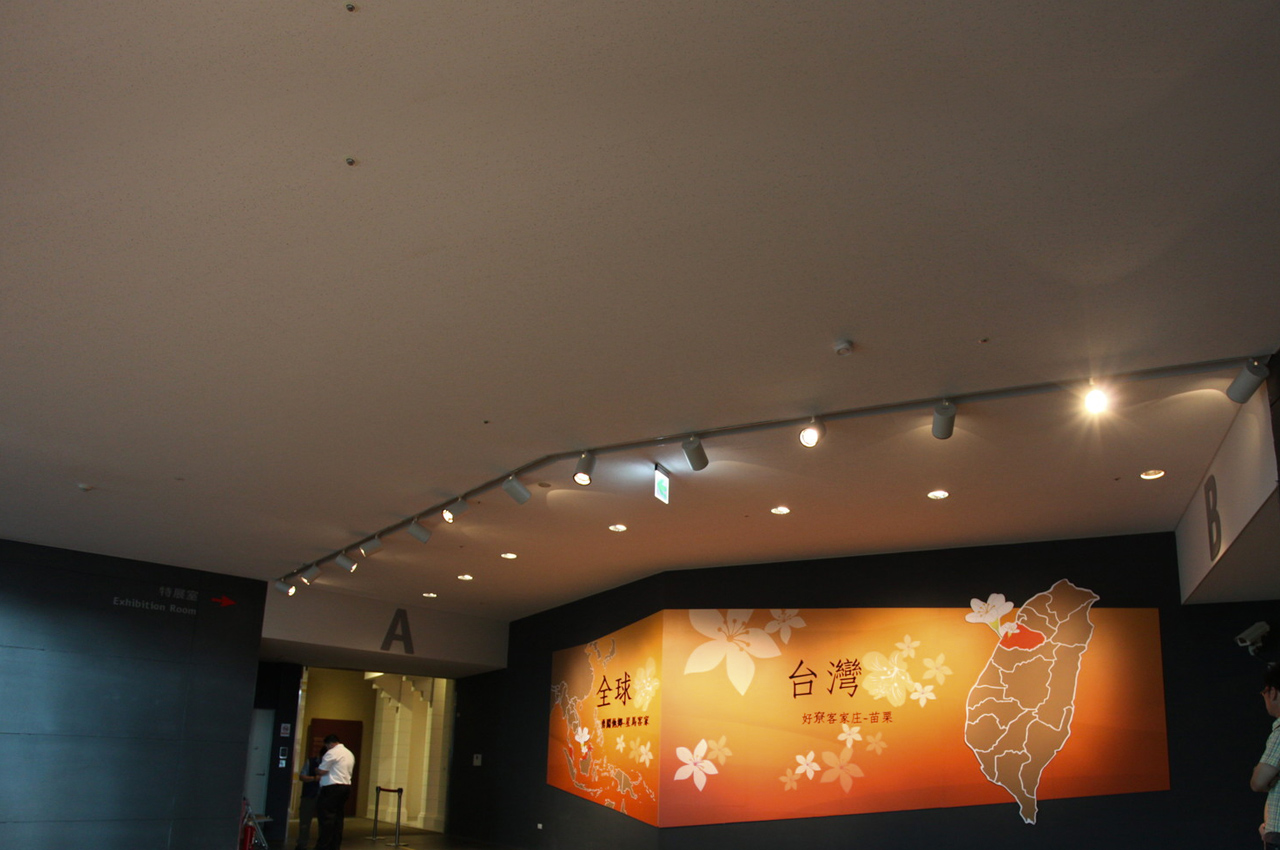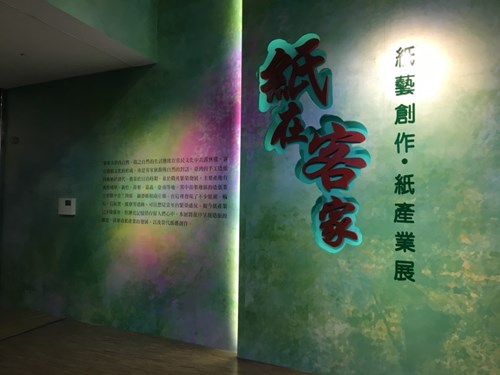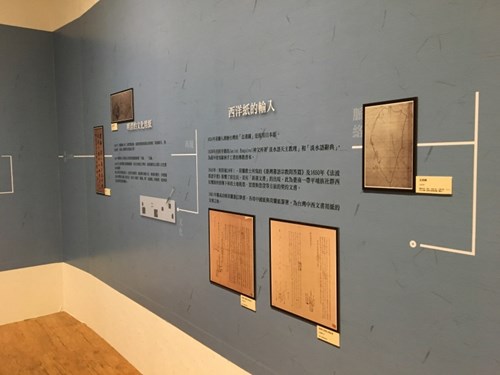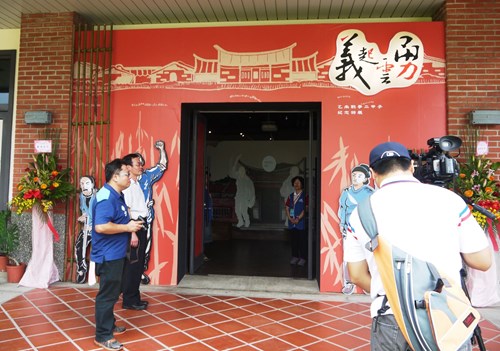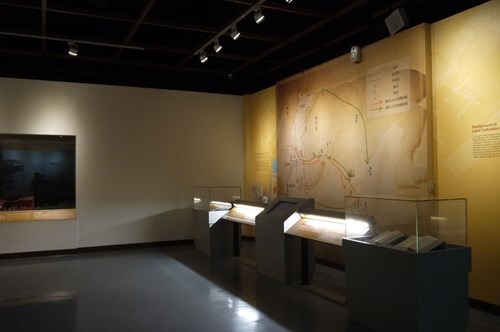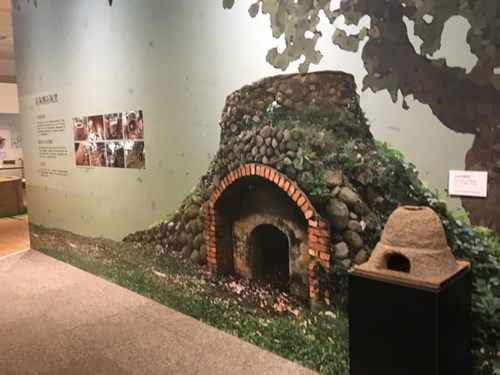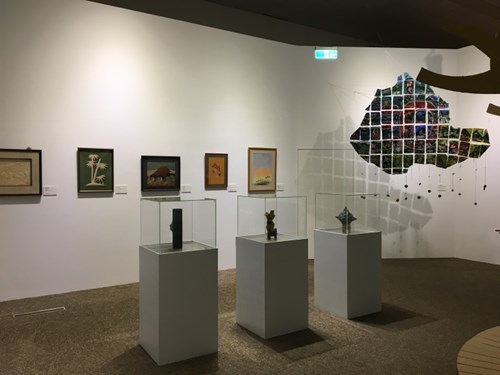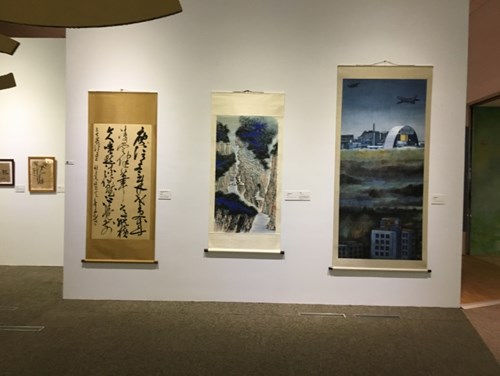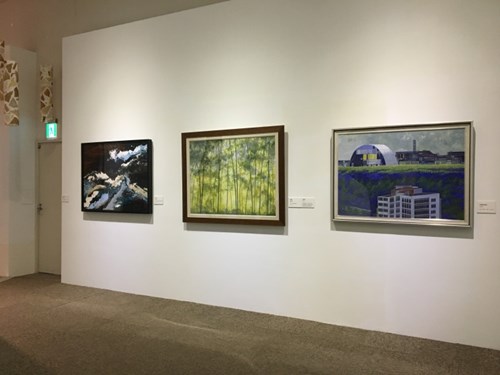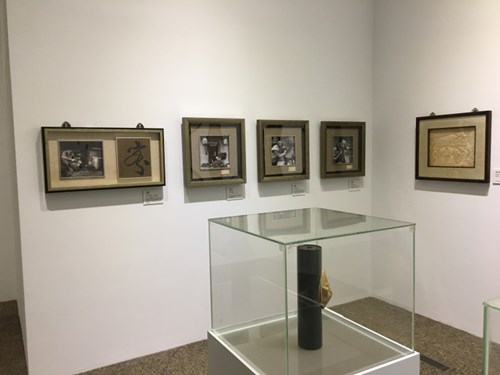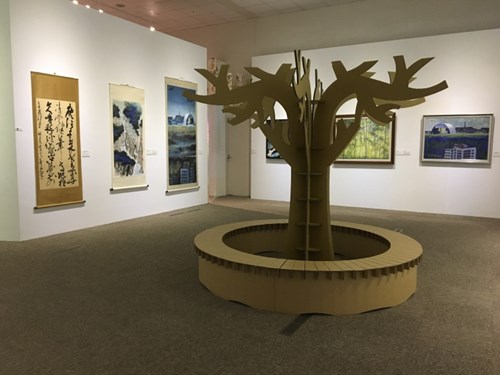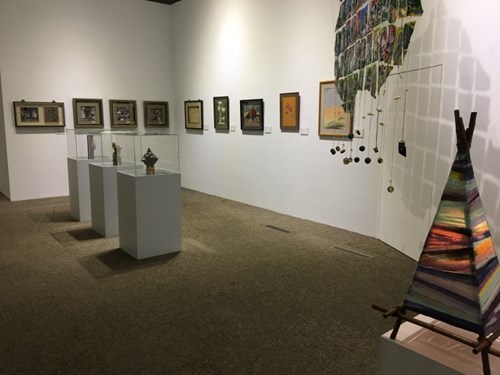Exhibition Review
1st Special Exhibition Hall - Paper in Hakka – The manufacture of paper and the development of paper industry
"Paper in Hakka – The manufacture of paper and the development of paper industry"


The Hakka people worship nature and they utilize all kind of natural material in their daily lives. The Hakka paper industry was actually a conversation between Hakka and the mother nature as well. Taiwanese started to have handmade paper technique in the Qing dynasty.The paper industry was established during the Japan-ruling period, and it eventually flourished after WW2. Papers were mainly made in Puli Township of Nantou, Hsinchu, Miaoli, Chiayi, Tainan and so on. In Miaoli, the paper industry was mainly located in Sanwan Township, Shihtan Township and Nanjhuang Township. There are many relic of paper industry like paper pool, wheel, limekiln and paper workshops. We can therefore imagine the prosperous paper industry in the past. Right now, there is no more paper industry like it used to be, but the memory lives in people’ heart. This show is going to present the history of the paper industry, the development of it in Miaoli, and the modern paper art creation.


The history of Taiwan handmade paper
The technique of papermaking has been created for about two thousand years. In the middle of the 8th century, papermaking was introduced to Arabic from China, and to Europe and America later. Paper became the most convenient media of spreading knowledge and culture, and also a necessary item of people’s daily lives. At the very beginning, people used hemp paper, and then bark paper, and later plant stem paper (like bamboo paper, which is made by bamboo stem with a series of complicate procedure). In the early time, Taiwanese used bamboo to make paper that was mainly used to make joss paper for the local religion. The less refined bamboo paper was used to make cardboard, paper box, package paper, toilet paper and the like.




The paper industry in Miaoli
In the north Taiwan, the paper workshops were mainly located in Hsinchu and Miaoli.Especially in Miaoli,there were many relics of paper industry found in Sanwan Township, Shihtan Township and Nanjhuang Township. There, the environment was perfect of planting bamboo. The ingredient supply was good and therefore these townships had the most prosperous industry of the area. The ingredients of papermaking were makino mambo and lime. After makino mambo and lime were soaked in a paper pool for a period of time, lime will soften the tissue of bamboo which are the ingredient of making paper. The soften bamboo tissue is also called “Bamboo grandma”. Next, the bamboo tissue is grinded into powder form and put into a beater vat to make paper pulp. After that, people use a paper screen to filter paper pulp. After the pressurization and sundry procedures, paper is made. Paper pool, wheel, beater vat, paper trough and paper screen are the essential instruments of papermaking.






The middle-small size companies in Miaoli mountains
The paper industry in Sanwan Township started from the frontiersman Huang Wang-lin, followed by Liu Ding-chang and Ah Mei Bai in Shen-zhao mountain, Fan Yang-huo in Dahe Village and others. The papermaking industry were mainly located in Dahe Village, Dingliao Village, Luanshan Lake, Chuhu, Neiwan Village and other places.。
Huang Nan-qiu in Shihtan Township also made paper, but mostly bamboo tissue. The main papermaking families here were Lin Shih-hsing from Shan mountain, Liao Wah-sheng from Baishou, Huang Ah-tim from Shen-zhao mountain and Lin Tsi from Shen-zhao mountain. They were located in Xindian Village, Yongxing Village, Xianshan, Youtou and Baishou Village.
Nanjhuang Township’s paper industry had a deep geographical relationship with Sanwan area. The paper making technique might be introduced from Huang Wang-lin and his family.The main papermaking families were Qiu Jinlan, Fan Zhi-sheng at Da-hun-ding, and Dai Tian-xi at Nanjiang Village. They were mainly located in Shishan Village, Tian Mei Village, Nanjianjia Village, Da Nan Pu,Shen-zhao mountain and other places.




Handmade paper and the peripheral industry
When the early Fujian and Guangdong residents came to Taiwan, they were facing the unpredictable sea, weather, sickness and plague. Their religions and gods from the original provinces became their spiritual comfort. They needed a lot of joss paper for the religious ceremonies, and thus there was a big market of joss paper. Joss paper was made of bamboo paper. The paper workshops near Sanwan Township and other places sent their product (bamboo paper) to Tou-wu by light vehicles through Paper Lake trail. The paper was then sent to Zhu-nan for sale. In 1970s, the joss paper industry reached its flourishing era. There were more than 300 joss paper factories at that time.
In the early 20th century, the industrialized papermaking in Europe rose, and it caused the deficit of papermaking ingredients. Japanese wanted to make the wasted sugar canes into sugar cane tissue for papermaking. In order to improve the quality of paper pulp, they mixed the wasted sugar canes and bamboo tissue to manufacture industrial paper pulp. But it also caused the deficit of Taiwan bamboo tissue supply. This need of bamboo tissue became international later. The technology of papermaking went into mechanize era from handmade era.




The revival and revolution of handmade paper
Since 1980s, as Taiwan society changed, the handmade papermaking industry had the problems of insufficient labor force, the rising salary, environmental protection concept in people and the difficulty of getting raw material. This industry became less and less competitive. Small papermaking factories closed one-by-one. After Qiu Jinlan’s “Honor Paper Workshop” closed, the handmade papermaking industry in Miaoli came to an end.
Although the Hakka papermaking industry no longer exists because of the modern society development, there are some people still making paper for other reasons. Some historians investigate and record the technique of papermaking based on the oral history from the local residents. They rebuild paper workshops, limekiln, paper pool and other instruments to make bamboo paper in the traditional way. They emphasize the natural manufacture procedures and utilize some new materials like ginger lily, peach, loofah, lotus leaf and so on to create some diverse paper artworks.






